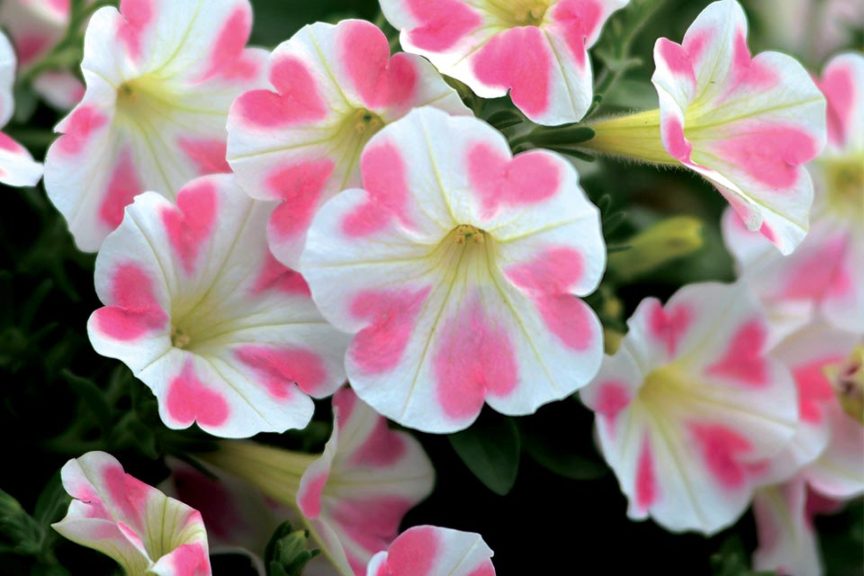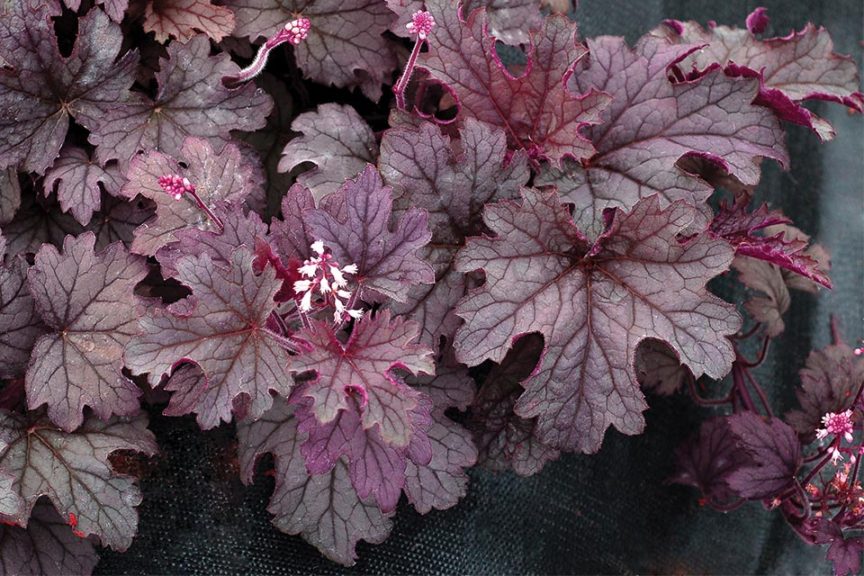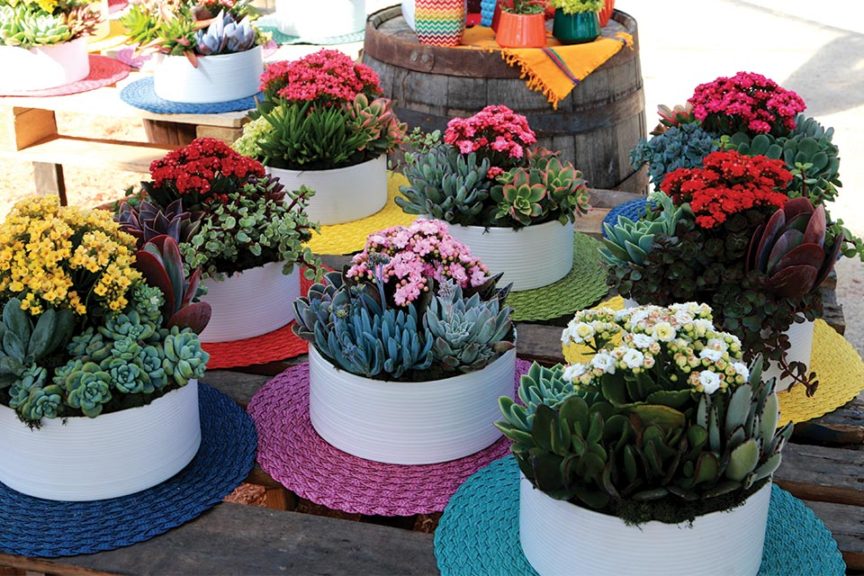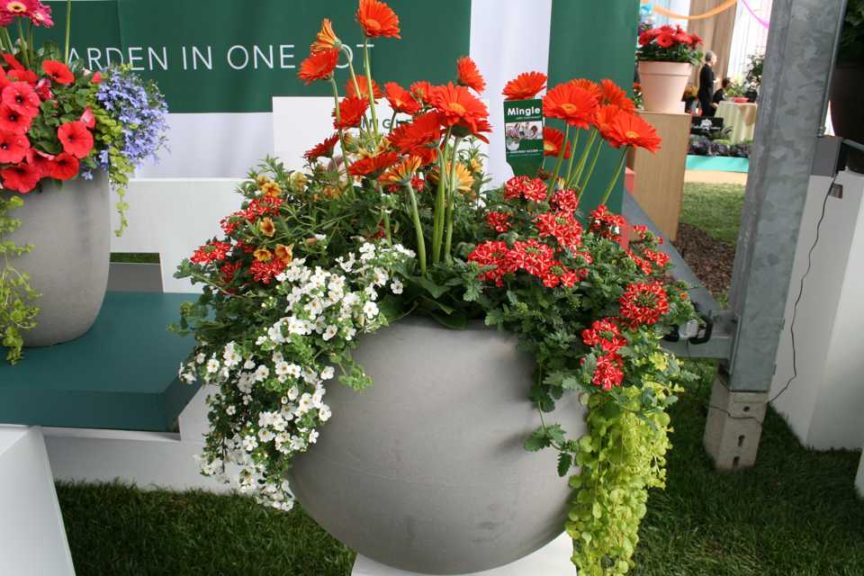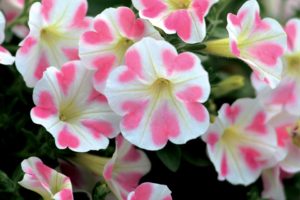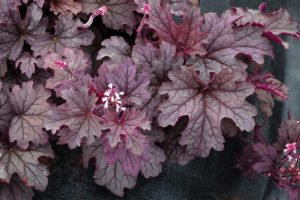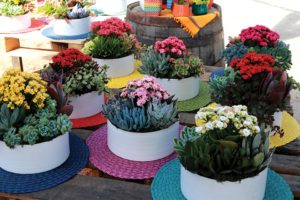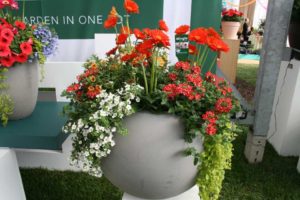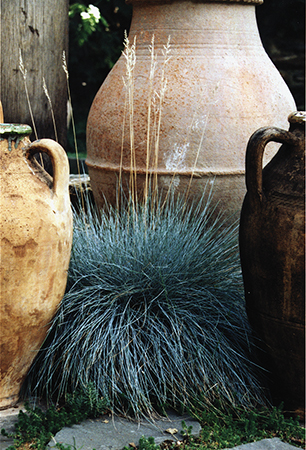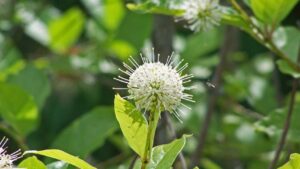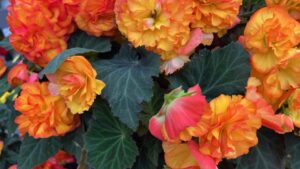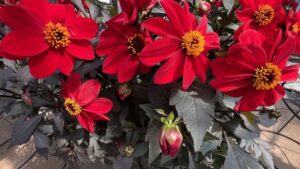Pair New Spring Crops With Fresh Ideas For Increased Sales
Spring crop sales, squeezed into four to six weeks, represent a major portion of your profits each year, in return for a disproportionate amount of work that starts months earlier. If you’re going to make the effort, be smart about your product choices for your spring mix and sell creatively.
What should you be selling for spring crops? Flowers that span the entire season, not just spring color, says Rick Schoellhorn, Director of New Products for Proven Winners, who points out that consumers do not understand a spring interest plant. They only think they failed when it dies in the summer.
You’re not alone in solving the puzzle of what plants consumers are after. If you want to grow what you can sell profitably, look no further than those who are in tune with consumers’ interests.
“Growers need to focus on their relationships with their retail customers, and ask them what they need and how to better partner for new crops and ideas,” Schoellhorn says. “It is not enough to grow plants; a grower who wants to succeed in the long term needs to link with retailers and grow the plants they want.”
[blackoutgallery id=”132303″]
Consumers Crave Color
This year, plants with vivid, neon colors and unique color variations are hot. This includes plants that won’t fade out in the heat of summer and play well with others, such as Ball FloraPlant’s ColorRush petunias, which come in bold colors that stand up to summer heat and rain, and Dümmen Orange’s heat-tolerant CannaSol Cannas that mix well with coleus, New Guinea Impatiens, and Ipomoea.
For unique color combinations, Westhoff’s Petunia ‘CrazyTunia Citrus Twist’ with scarlet-red stripes on bright-yellow blooms, offers something distinctive, as well as Sakata Ornamentals’ ‘SunPatiens Compact Tropical Rose,’ with bright-pink blooms that pop against lime-green foliage edged with dark green. And finally out this year is Selecta’s Petunia ‘Night Sky,’ a speckled bloomer that takes variability to the extremes.
Color and value are two potent factors Terra Nova Nurseries is capitalizing on for spring and summer color, by providing showier varieties with a longer bloom time. The company is seeing success in several crop categories for spring sales.
“Heuchera sales remain strong, while begonias are catching up, as it seems too many people think this is a new genus,” says Dan Heims, President of Terra Nova Nurseries. “The coleus varieties are catching fire with huge availability. Echinacea sales are also quite strong.”
Don’t Discount The Uncommon
If you limit yourself to thinking that the only plant varieties that provide color are those with flower power, you’ll miss out on some of the great foliage plants that provide color, such as masses of heuchera and caladiums that can provide color from spring to fall, and trailing forms of heucherella for colorful groundcover.
“Foliage plants play to all-season interest,” Schoellhorn says. “This type of trend is helping to move consumers from an ‘all-flowers’ frame of mind, to a more ‘color is color’ mindset.”
Limiting yourself to the usual spring standards makes you no different from your competitors. Be creative and don’t overlook niche varieties that can give you an added boost of profits.
Chanonchi Zaks, President of Sales at Danziger “Dan” Flower Farm, says now is the time for special and unusual products.
For instance gerberas, commonly seen as a gift plant, can add an informal, whimsical touch to the garden and come in a wide range of bright colors for containers and the landscape.
There are many gerbera options, from Proven Winners’ weather-tolerant Hello! Gerberas that have blooms a bit smaller than seed gerberas, to Florist Holland’s ‘Sweet Caroline’ and ‘Sweet Memories’ from the Garvinea series of garden gerberas that flower from spring to hard frost. Sakata Ornamentals’ new Gerbera Majorette series includes bi-colors and a true-white gerbera, and Kieft Seed’s ‘Revolution Bicolor’ gerbera, while marketed as a gift plant, will still work well for outside containers.
Other out-of-the-ordinary picks include the Gomphrena Ping Pong series from Sakata, which comes in three colors that you can combine in a mono-crop container for added interest, and Evolvulus ‘Blue My Mind’ from Proven Winners for warm-climate growers. Finally, for a true novelty weirdo that will get people talking, Manettia Candy Corn Vine from Dümmen Orange gets its name because its flowers resemble the famous Halloween candy.
Combos – Consumers Can’t Get Enough Of Them
Another long-running trend any time of the year is the container combo craze.
“Combinations are always popular because of their uniqueness and variety of colors,” says Syngenta Flower’s Senior Product Manager Ryan Hall. “For the warmer regions, it’s important to ensure that all components can withstand the heat and survive through the season.”
Syngenta’s Kwik Kombo vegetative mixes, including two heat-lover blends, Grand Finale and #summerfun, make it easy for growers to choose container combinations that time well together and thrive in the heat.
Suntory Flowers and Dümmen Orange were two of several breeders displaying innovative spring and summer combos at California Spring Trials 2016. Suntory featured new single-species combos of its double petunias and three combos using its BeeDance Bidens series. Dümmen Orange presented succulent container mixes with “pop in” kalanchoe for added height and a splash of color and texture.
“Mixing different genera for multi-purpose use is a trend we see expanding in scale,” says North America Product Manager Emily Mason and Tanner Cole, Marketing and Trial Manager, for Dümmen Orange. “Combining gerbera and annuals for cut-flower containers bridges interior design with spectacular exterior aesthetics. Flowers add color to edible containers and herb centerpieces to make the combos stylish enough to use as decorations.”
Move More Product With A Cause
Trends are also about what stirs up passion in consumers. If an event or cause is what gets them excited, make sure the plants you grow and sell are associated with them.
For example, The National Pollinator Garden Network’s initiative to register a million public and private gardens and landscapes to support pollinators through the Million Pollinator Garden Challenge is spurring on consumers’ already avid interests in pollinator gardening. You can leverage this and similar programs as marketing tools to promote pollinator-friendly varieties at your place of business.
Suntory Flowers has figured out this concept, selecting BeeDance Bidens for this type of promotion and promising a portion of the royalty from cuttings sales to support honeybee health research through the Pollinator Partnership.
Pentas is a good summer-performing annual to offer for pollinator gardens because butterflies flock to them, and they hold up well in summer heat and humidity. Seed pentas such as Syngenta Flowers’ BeeBright and HoneyCluster series offer non-stop flowering options to address this growing trend.
There are all kinds of local causes to match plants with, whether they are health-related or caring for segments of the community in general. Delilah Onofrey, License Manager for Suntory Flowers North America, gives the examples of Suntory’s new ‘Surfinia Heartbeat’ petunia and Danziger’s Amore petunia series with their heart patterns, both of which would work great to stock as a special promotion or for kids to offer as gifts for Mother’s Day.
Whatever you’re promoting, whatever you decide to grow for spring color, in addition to top-selling staples like petunia, begonia, calibrachoa, and the like, get creative with what you sell and how you sell it. Your customers will notice the difference, and your bottom line will never look better.





